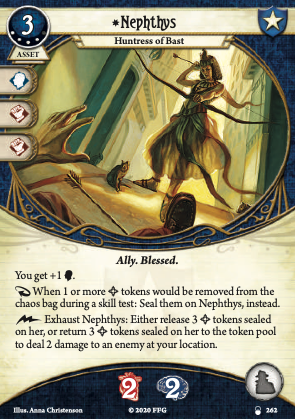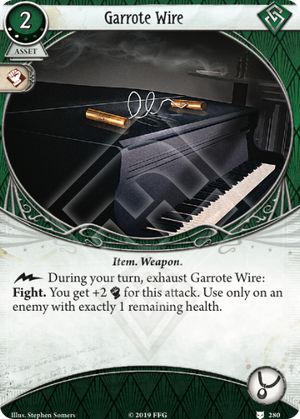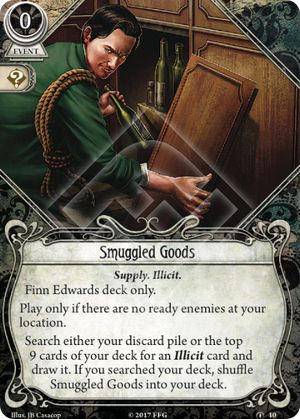
If you’re wondering why Sister Mary is in Guardian, this is why. Passive enemy extinction.
Even in a fast game, Sister Mary will add 12 to 17 tokens to the bag just by existing. And until you have allies like Nephthys or a covenant, you’re going to cringe anytime someone draws a double bless. (Unless you have blessing of Isis.*)
Now, you want your allies to draw blesses! It lets you explode enemies, even more effectively than guard dog(2). +1Will is OK, and you could even teamwork this ally to a mystic, because it doesn’t matter where the Blessed tokens come from as long as they get used.
There is another combo with this. Holy rosary (2) wants you to pass every willpower check you get. Bast’s faithful helps out. You handle this, first watch, and I'll Handle This! allows you to cycle tokens through the bag even faster. Enchanted weapon also wants your willpower to be increased. There’s plenty to elevate Mary even without spells.
At 4XP, Nephthys is extremely expensive for an ally. Cycle hard, get her out early, and melt foes. Neph is best (Bast?) at high player counts, where blessings will be drawn continually.
*It’s worth noting that there’s an anti-synergy between this card and blessing of Isis. Nephthys wants tokens taken out of the bag. Isis keeps them in there, and if you’re Mary increases them. You could take both, and on a larger team someone could take the other. But they go in different directions, so don’t spend your XP on both at once.
Spring 2024 edit: New bless tech, like Blessed Blade (4), make the huntress even deadlier. You don't need to run a covenant with this combo.



